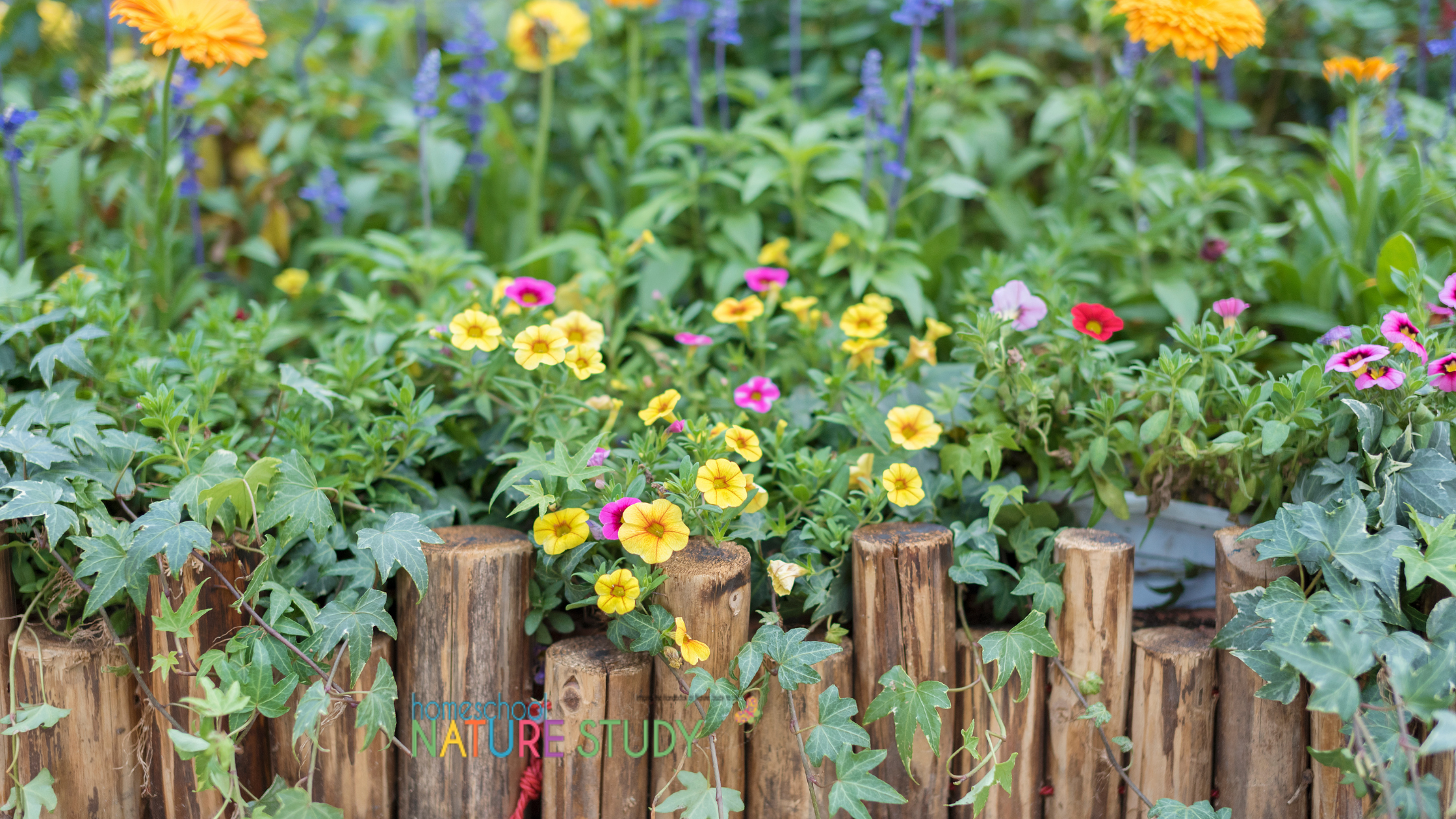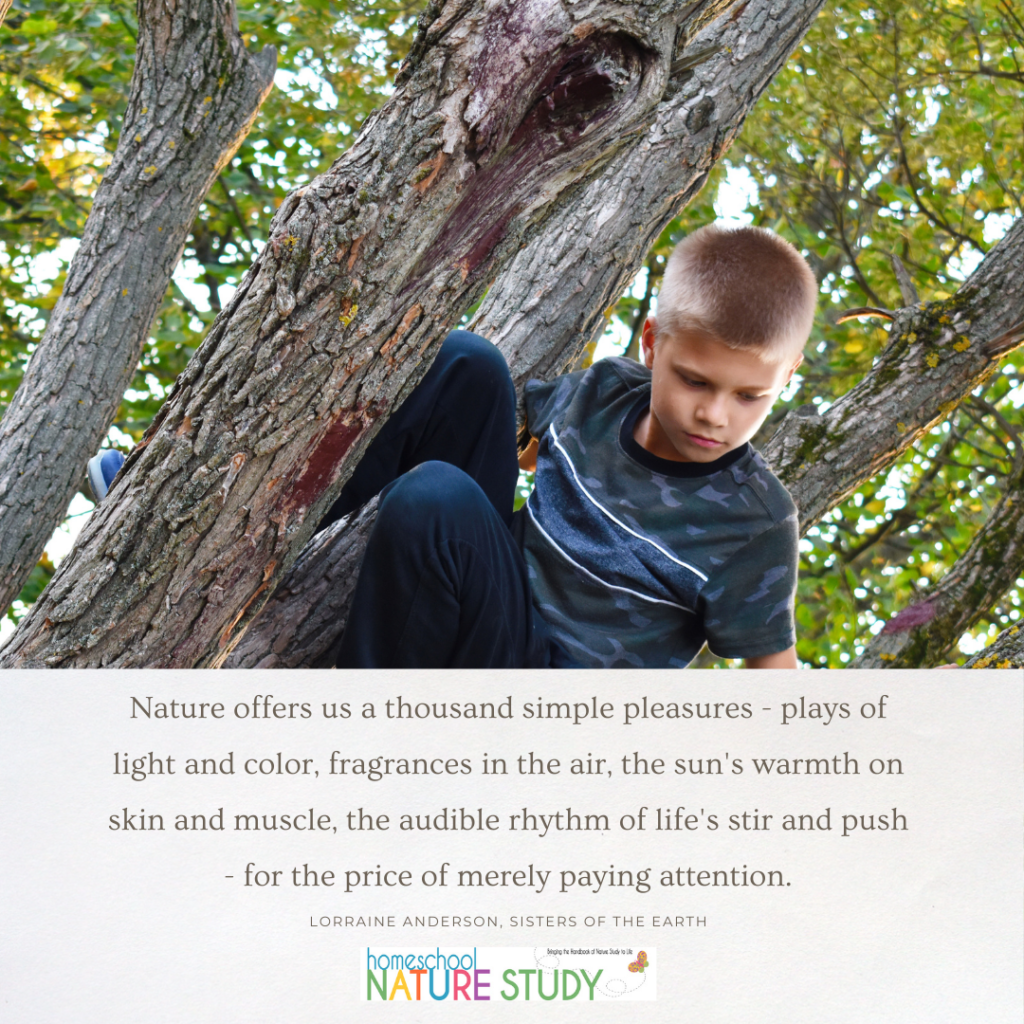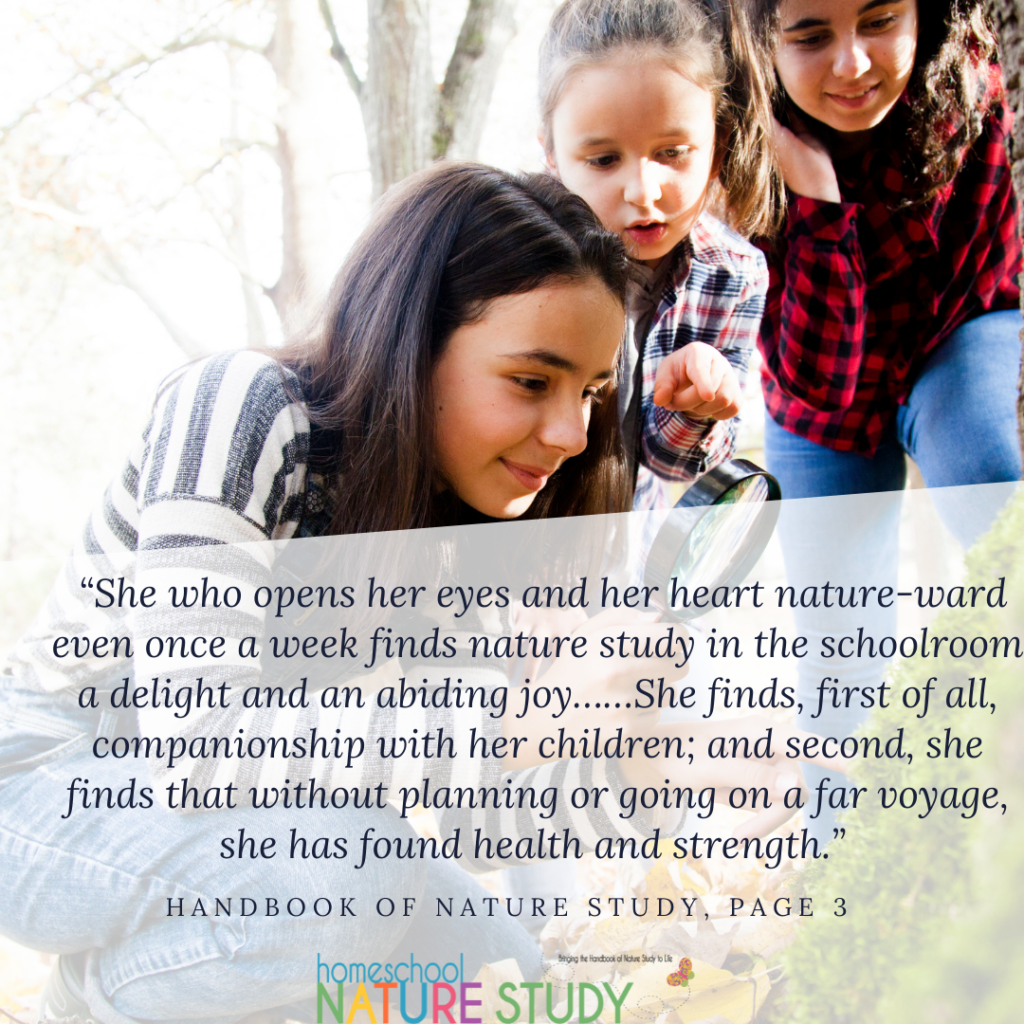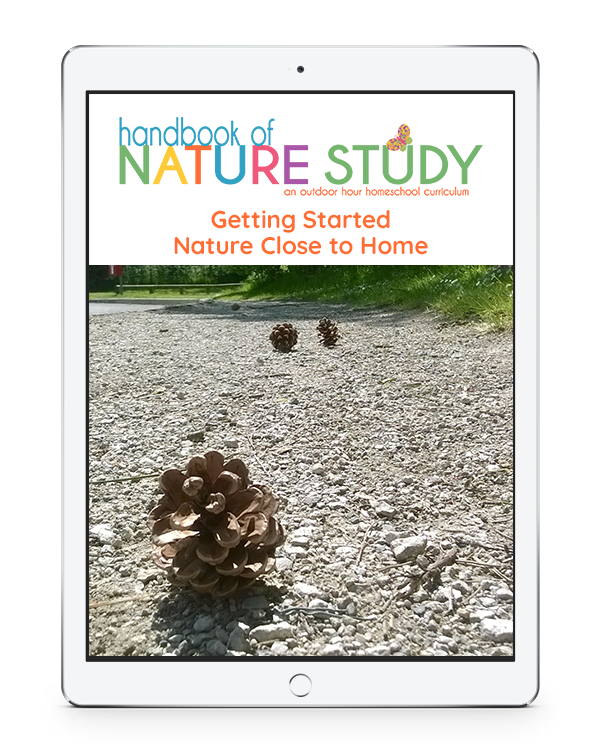
Your backyard truly is homeschool nature study laboratory! We will show you how you already have what you need for building the habit of getting outside with your children.
We are challenging you to begin homeschool nature study with the intention of creating the habit of getting outside with our children every week. There is something exciting about starting nature study with all the possibilities in front of us. Take the opportunity to join us for what could be the start of a grand adventure.
How do you create the habit of getting outside with your children?
Baby steps. We are here to help you with some methods that have been shared over the last decade, guiding hundreds of families to successfully navigate nature study close to home. When establishing a new habit, we have always found it helpful to start small and work on consistency.

Your Backyard is a Homeschool Nature Study Laboratory
A new habit can be encouraged simply by seeing the benefits of an easy change. Think of your backyard and neighborhood as a nature study laboratory. Change your view of what is right outside your own door. Look for the extraordinary in the ordinary. Starting with the things closest to home, you’ll soon see how the habit of getting outside each week comes more easily.
What is there to observe in our backyard Homeschool Nature Study Laboratory?
Here are just a few things you have easy access to for backyard homeschool nature study
- Trees: leaves, bark, twigs, roots, flowers, cones, needles, seeds, pods, nests, birds
- Patch of weeds: leaves, roots, bugs, flowers
- Dirt: worms, gravel, stones, seeds, mud, ants, mushrooms, moss
- Sky: clouds, sun, moon, stars, birds
- Air: temperature, wind, smells, breath on a cold morning
- Birds: flying, pecking, eating, chirping, hopping, shapes and colors, beaks, wings, tails, feet
- Sounds: wind, frogs, rain, leaves, crickets, bees, fly buzzing, mosquitoes
- Weather: rain, clouds, temperature, snow, ice, dew, wind
- Flowers (garden or in a pot): petals, pollen, roots, leaves, stem, fragrance, shapes, colors, seeds

How long does it take? Just 15 minutes!
Consistently taking fifteen minutes during your weekly schedule to get outside will be of great benefit in providing interesting things to observe. Even better, take that time when your child is distracted or listless during the homeschool day and seize the opportunity to get outside with them for just a few minutes. Once you see the benefits of allowing this time outside to reset, you’ll begin to see nature study as a refreshing necessity rather than a task that needs to be checked off a list of things to do.
We don’t need to devote a lot of time to nature study during our weekly schedule. Keen observation is the key, not reading lessons, filling in notebooks, or keeping collections. Short walks outdoors along with our children as we encourage observation will do far greater good than any other form of lesson plan.

Can I just send my kids outside on their own?
Children need to grow the habit of looking at things carefully. In nature study, we can encourage our children to look at things more closely, to really see what is there. You need to go with your children outdoors at first, walking alongside them or being available nearby. This will alert you to subjects of their interest. Have them describe what they see and perhaps you can ask a few leading questions. Keep it friendly and light.
“The great danger that besets the teacher just beginning nature study is too much teaching, and too many subjects. In my own work I would rather a child spent one term finding out how one spider builds its orb web than that he should study a dozen different species of spiders. If the teacher at the end of the year has opened the child’s mind and heart in two or three directions nature-ward, she has done enough.”
Anna Botsford Comstock
In My Experience
Your backyard homeschool nature study can hold your attention for a long time if you are diligent about looking for a variety of things to observe. Most of us have plants, birds, trees, rocks, insects, invertebrates, and mammals that will visit us at least at certain times of the year. Challenge your family to pick something each week to learn more about. Nature study is a long-term project (or even a lifestyle) that everyone can find satisfaction in doing together as a family.
Each family member can develop their special area of interest. My daughter and I love flowers and birds. My husband is a tree person. The boys enjoy insects, rocks, and mammals of all sorts. Look for your child’s interest and nurture it! I sometimes wouldn’t get involved at all when the kids were looking at something. Quietly observing their interaction with the natural world gave me insight into what we could learn about in the future.
Remember that nature study intensity can come in cycles. There are periods of time or seasons of the year when we devote much energy to getting outside and taking nature walks. The amount of time may fluctuate to fit our family’s circumstances. Although regular outdoor time reaps the most benefits, real life demands we make allowances for breaks and interruptions. But don’t let these breaks stumble you and get back into it as soon as possible, picking up where you left off.
What can homeschool parents do?
To be successful in creating a nature study habit, it’s helpful for parents to be enthusiastic and see for themselves the beauty in the natural world. Start with your passions and then build from there with what you discover about your child’s interests. For example, if your interest is in flowers, spend time in your garden together or visit a nearby garden with your family. Start off looking at flowers and see where that leads. An insect may visit your flowers, or a bird may land nearby. Try to allow for nature study to unfold before you.
They need you to regularly allow time to just be outside during all the seasons. We can all bear fifteen minutes a week of backyard homeschool nature study under even the most uncomfortable circumstances. If you keep in mind that your nature study can be just outside your back door, you’ll be more apt to go out regularly.
Homeschool Nature Study Members Have Great Resources at Your Fingertips
Consider working through the first three Outdoor Hour Challenges in the Getting Started ebook. These three challenges can help build your nature study habit. I highly recommend following the suggestions for reading in the Handbook of Nature Study that go along with those challenges. The words expressed in those readings include timeless advice to parents about the value of regular nature study close to home. Make sure to have the printable nature journal pages bookmarked in case your child is ready to create a record of their Outdoor Hour Challenge.
#1 Let’s Get Started
#2 Using Your Words
#3 Now Is The Time To Draw
Look for the Outdoor Hour Challenge Planning Pages printable in the Planning Resources course. Use these pages to make a rough plan for your nature study.
If you’re not a member here at Homeschool Nature Study yet, please consider joining to gain the benefit of having a nature study library at your fingertips. There are numerous resources available for you to help create the habit of nature study within your family.



I thoroughly enjoyed reading your article on creating a backyard homeschool nature study laboratory. Your emphasis on hands-on, experiential learning and connecting children with the natural world is commendable. To add value and continue the discussion, it would be beneficial to delve deeper into specific activities or projects that can be incorporated into a backyard nature study laboratory. For instance, you could explore different ways to engage children in scientific observations, such as setting up bird feeders to attract local bird species or creating a small pond ecosystem to study aquatic life. Additionally, discussing the importance of documenting and journaling observations, as well as fostering a sense of curiosity and exploration, would be valuable for parents and educators looking to establish their own backyard nature study areas. Overall, your article provides a great starting point, and expanding on specific ideas and practical tips would inspire and empower readers to create meaningful nature study experiences in their own backyards.